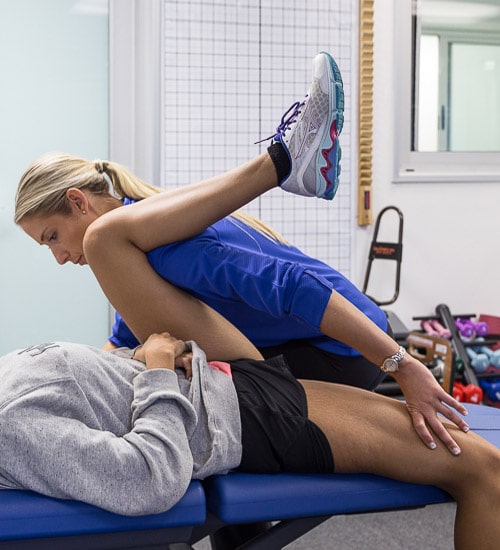Posts Tagged ‘rehabilitation’
Physical Therapy for Ankle Pain
Are you having pain with walking, running or jumping? Do you feel unsteady with walking or single leg activities? Do you roll your ankles often? You’re not alone. Ankle pain and injuries are very common, especially in sports that include running and jumping. Our ankles are first to respond when we have to balance and any strength or mobility deficits here can have a big impact on how we move and stabilize ourselves. At Symmetry Physical Therapy, we are specially trained in assessing the cause of your ankle pain and creating a treatment plan for you so you can get back to doing what you love.
Read MorePatellofemoral Pain Syndrome
Patellofemoral Pain Syndrome (PFPS) is a common condition that causes pain in the front of the knee, under or around the kneecap (patella). It accounts for 20-25% of all reported knee pain. It occurs in all age ranges, females more often than males. Those who play sports are more commonly affected. Understanding this condition can assist in the recovery process.
Read MoreAdductor Strains
Groin Strains If you played sports, it is likely that you have experienced an adductor groin strain. This injury is most common in sports like soccer, ice hockey, tennis, rugby, baseball, basketball, and football. A groin strain can limit your ability to perform many activities like running, kicking, cutting or changing direction, and can linger…
Read MoreFlexibility vs. Mobility: What’s the Difference?
Chances are you’ve seen an Instagram account or two (or ten) promoting mobility challenges. These include exercises that require motion at many joints to perform correctly. So you’re probably thinking, I can stretch for 5 minutes and then try this exercise again with a better result. By doing this, you might not see the results…
Read MoreBenefits of Unilateral Exercise
Unilateral means “one sided”; an exercise performed on one side of the body, or with one limb. Bilateral means “both sides”; an exercise performed with both sides of the body or with both limbs. For example, a piston would be considered a unilateral exercise, where a squat would be considered a bilateral exercise. Unilateral…
Read MoreHow to Challenge your Balance to Train it
How the Body’s Balance System works: Balance relies on three distinct systems to come together: your eyes for sight, your inner ear for vestibular input, and then the bottom of your feet for proprioception. Your brain takes all the sensory input from these three areas of the body, and with that information tells your muscles…
Read MoreWhy is Hip Mobility so important?
Why is Hip Mobility Important? Hip mobility is essential to the proper full functioning of the hip joint. While the hip joint is meant to be more stable and less mobile than the shoulder joint, it can still be extremely limiting and even harmful if the hip joint lacks its full mobility. There are many…
Read More3 Reasons Strong Glutes are Important
What do your glutes do? There are different glutes; three to be exact: gluteus maximus, gluteus medius, and gluteus minimus. Together, these muscles are responsible for hip extension, internal rotation, and abduction of the hip. The glute medius and minimus work together to promote hip abduction and prevent hip adduction. These muscle come in most handy when…
Read MoreWhat is Contract-Relax Stretching?
What is Contract-Relax Stretching? Contract-relax stretching is a form of PNF stretching. PNF stands for proprioceptive neuromuscular facilitation. What does that mean? It means that it uses natural reflexes to further the stretching response. In contract-relax stretching, you must first isometrically contract the opposite muscle. Then after contracting, try to further stretch the intended target. For…
Read More








